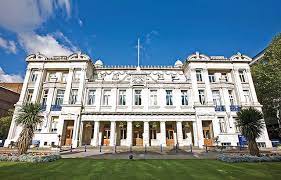Researchers From Queen Mary University Of London Find Social Media Posts Can Be Used To Track Individuals’ Income And Economic Inequalities
Striking differences in the content shared by people who live in wealthier versus poorer neighbourhoods has led researchers to believe that our general online posting activity, beyond Nextdoor, can reveal our socioeconomic status, making user profiling possible.
Knowing users’ income could allow social media platforms to recommend income-based content, and advertisers and online shops can target people based on their economic profile and offer specific products at different prices based on their income level.
The findings of the study also show that people who live in wealthier neighbourhoods were more likely to share positive posts but would discuss crime more, even if the actual crime rates are lower than in poorer neighbourhoods.
Dr. Ignacio Castro, lead researcher and Lecturer in Data Analytics at Queen Mary University of London, said: “Our study shows that the text posted by users in poor neighbourhoods is distinguishable from the text generated in wealthier neighbourhoods. Online users’ content reveals socioeconomic factors: in wealthier neighbourhoods there is more crime-sensitive posting activity, but overall, more positive sentiment in the posts.”
This is the first large-scale study of Nextdoor, published on 2 June in the Proceedings of the International AAAI Conference on Web and Social Media, that shows how income levels and income inequality within neighbourhoods manifests online. Researchers collected and analysed 2.6 million posts from 64,283 neighbourhoods in the United States and 3,325 neighbourhoods in the United Kingdom, shared on Nextdoor between November 2020 and September 2021. With 10 million users, the platform allows verified residents to share posts on forums that are dedicated to their neighbourhoods. The study results are consistent in both countries.
Residents who live in richer neighbourhoods are more concerned about crime with the 20% richest neighbourhoods discussing crime approximately 1.5 times more compared to the poorest neighbourhoods. This happens even though crime levels are 1.3 times higher in those poorer neighbourhoods. People who live in wealthy neighbourhoods with less inequality discuss crime more than anyone else.
Regarding the type of crimes talked about, non-violent crimes are discussed more than violent crimes. Most user content trends are very similar between the US and the UK, with one notable distinction when it comes to weapons and violent crimes, which are discussed more in the US than in the UK for the richer neighbourhoods. This is not the case for middle income neighbourhoods, as UK residents tend to post about this type of crime more than their US counterparts.

